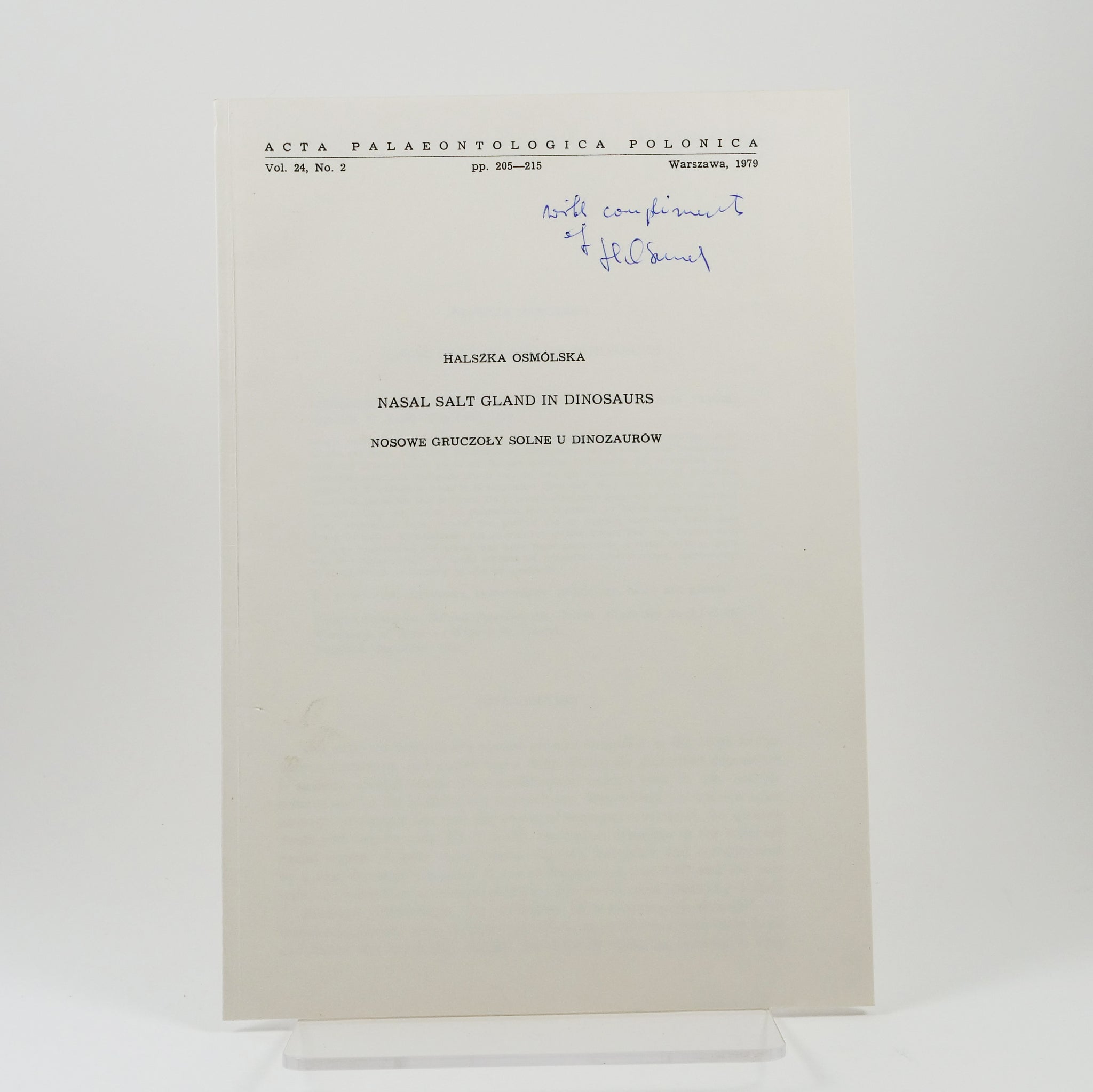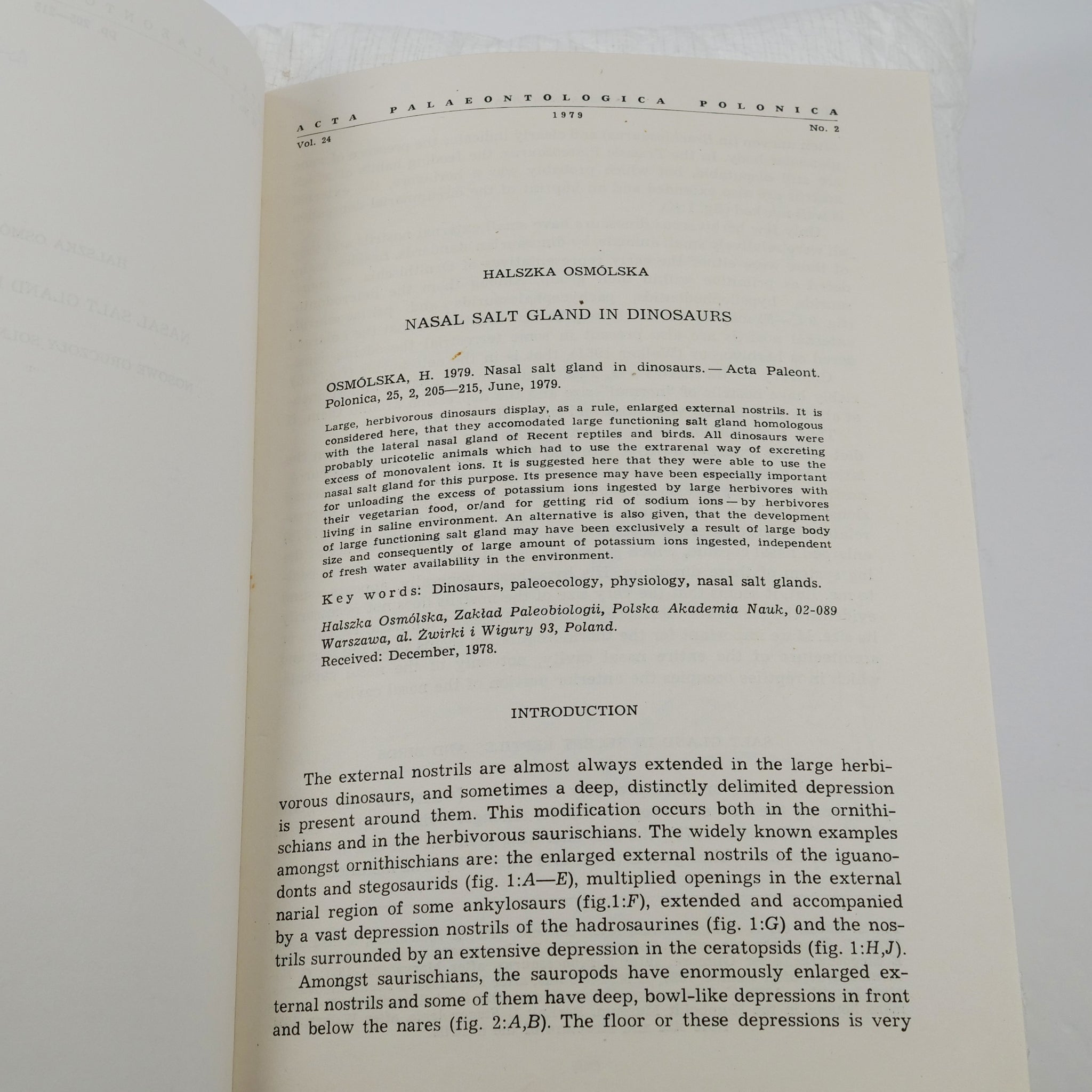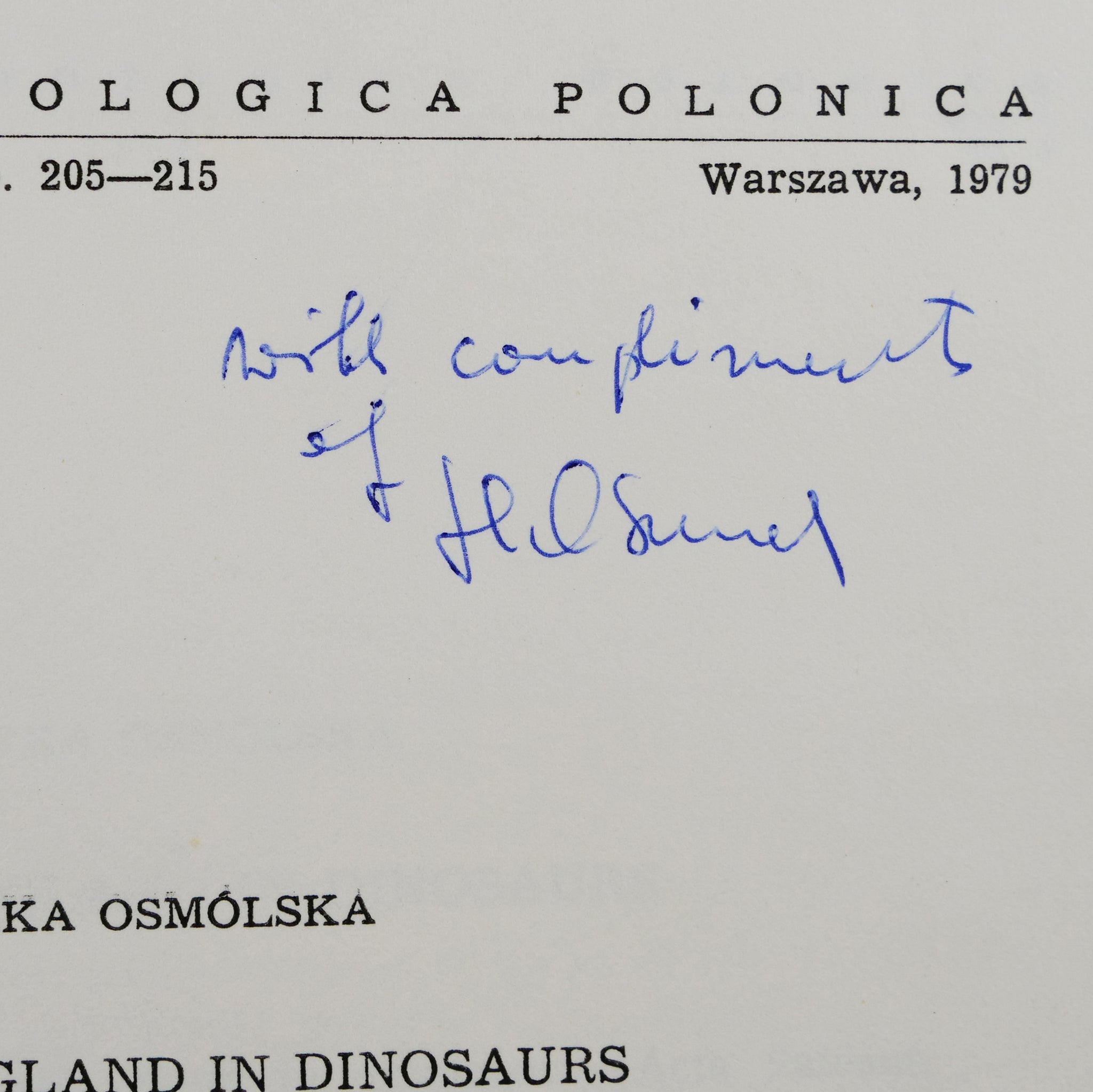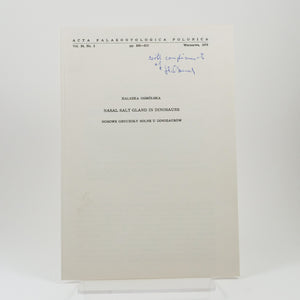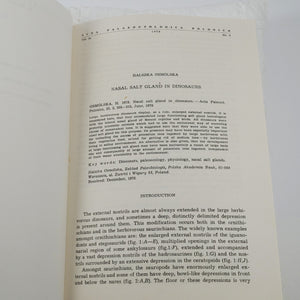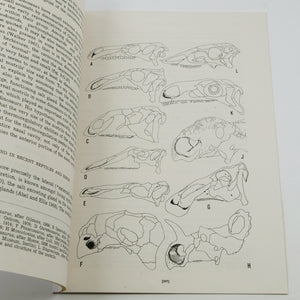Osmólska, Halszka | Nasal Salt Gland in Dinosaurs
£50.00
-
A rare, inscribed offprint by Halszka Osmólska (1930-2008), “one of the most productive dinosaur paleontologists of her generation” and “a giant” in the field (Dodson, ”Polish Women in the Gobi – In Loving Memory of Halszka Osmólska”, American Paleontologist, Vol. 16, No. 3, Fall 2008). Inscribed by the author on the upper cover, “with compliments of H. Osmólska". This paper discusses the purpose of nasal glands in dinosaurs, and whether they were used to excrete salt, as in some bird species.
Osmólska graduated from the University of Warsaw in 1955, and spent most of her career at the Institute of Paleobiology of the Polish Academy of Sciences, where she served as director between 1984 and 1989 and also as editor of the Institute’s journal, Acta Palaeontologica.
Osmólska was a member of the important Polish-Mongolian expeditions to the Gobi, which were led by Zofia Kielan-Jaworowska between 1965 and 1971 and resulted in the excavation of thirty-five tons of fossils. These excavations “added greatly to our understanding of the diversity of dinosaurs. The material collected in those few years provided material for major portions of the careers of five or six Polish scientists” and “the scientific descriptions of dinosaurs that soon began to flow from the expeditions were almost exclusively written by Polish women, women who up to then had published on Paleozoic invertebrates” (Dodson). Osmólska was one of these specialists, and much of her work on the Mongolian fossils was carried out in partnership with another prominent palaeontologist, Teresa Maryańska (1937-2019).
Osmólska and Maryańska’s first major publication resulting from the Gobi expeditions was the discovery of Deinocheirus mirificus (’unusual horrible hand’), “a fossil collected during the 1965 field season at Altan Ula III in the Nemegt Basin. The find consisted of two nearly complete articulated forelimbs of a theropod of unprecedented size. The forelimbs were 2.4 meters (almost 8 feet) long. The claws on the three-fingered hand measured 323 mm in length (nearly 13 inches). A possible ornithomimosaur, the animal remains enigmatic decades later, pending further discoveries” (Dodson).
Over the course of her career, Osmólska “was responsible for the description of 15 genera of dinosaurs. She was solo author of four of these, and first author of two more. The remarkable team of Maryańska and Osmólska was responsible for naming eight genera. She was honored in the names of a basal archosaur, Osmolskina czatkowicensis (Borsuk-Białynicka & Evans, 2003) and two dinosaurs: the oviraptorosaur Citipati osmolskae (Clark et al., 2001), and most recently (June 2008) Velociraptor osmolskae (Godefroit et al., 2008). She was elected to honorary life membership in the Society of Vertebrate Paleontology in 2003”. Osmólska was also an editor of the The Dinosauria, one of the most important scholarly reference works on dinosaurs, first published in 1990.
-
...(Nosowe Gruczoły solne u Dinozaurów). [Offprint from] Acta Palaeontologica Polonica, Volume 24, Number 2, pages 205-215. Warsaw: Zakład Paleobiologii, Polska Akademia Nauk, 1979.
11-page offprint. Original white wrappers printed in black. Skull diagrams within the text. A couple of minor creases and scratches, primarily to the lower wrapper. Excellent condition.

